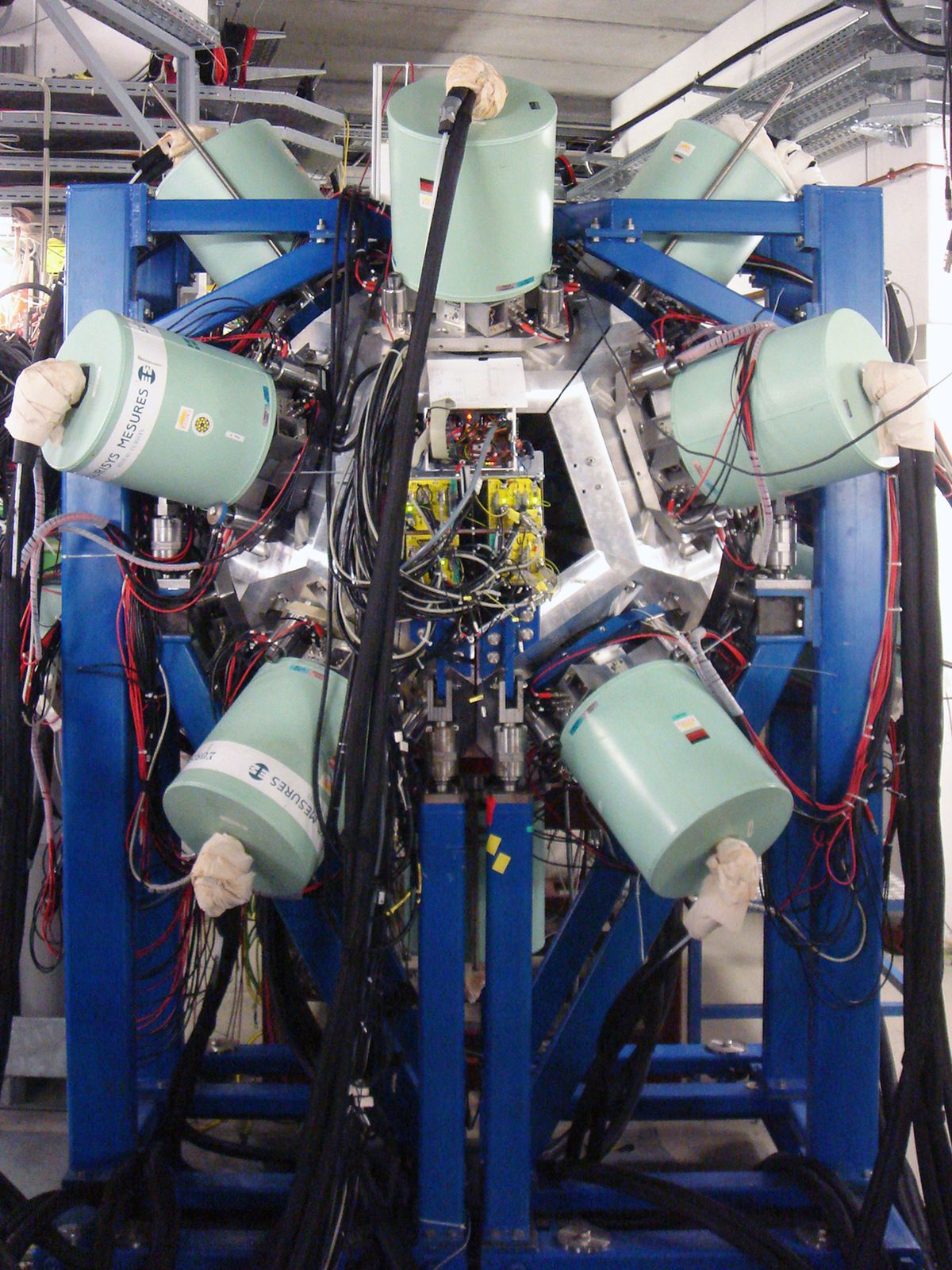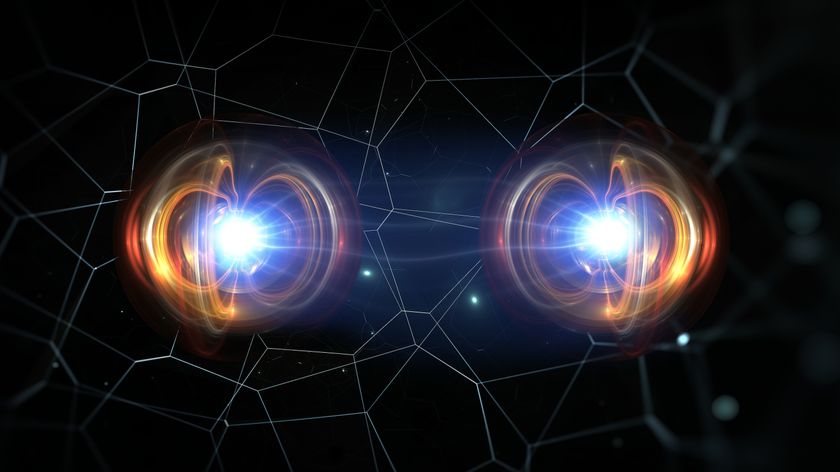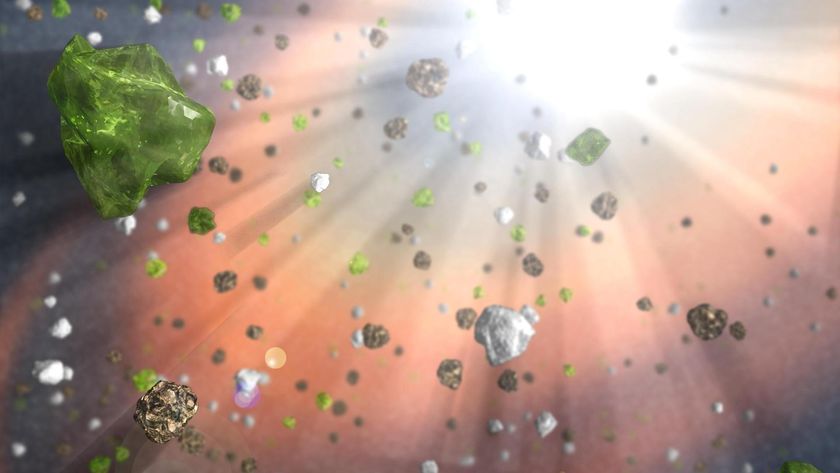New 'Doubly Magic' Atom of Tin Created

Tin, a material whose name is sometimes synonymous with "dull," has a secret side that's extraordinary, physicists say.
Scientists have succeeded in creating a new type of tin atom with "magic" properties and in studying it in more detail than ever before.
The nuclei of normal tin atoms are made of 50 protons and 62 neutrons, creating a stable substance called tin-112 (or 112Sn, which is the chemical symbol for tin).
However, scientists can make a special version of tin with exactly 50 protons and 50 neutrons, creating a "doubly magic" atom with equal numbers of its nucleus' ingredients. In the new study, physicists created this tin-100 and analyzed its decay to reveal some of its spectacular properties. The researchers, led by Christoph Hinke of Germany's Technische Universität München, reported their findings in the June 21 issue of the journal Nature. [Tiny Grandeur: Stunning Photos of the Very Small]
"They have achieved a significant leap forward in the study of the heaviest 'symmetrical doubly magic' nucleus," Michigan State University's Daniel Bazin, who wasn't involved in the new study, wrote in an accompanying essay in Nature. "Composed of 50 protons and 50 neutrons, this nucleus is drawing the attention of nuclear physicists around the globe because of its unique location in the nuclear landscape."
The nuclei of atoms have shells in which protons and neutrons can be arranged, similar to the shells of electrons that orbit the nucleus. The first nuclear shell fits two protons, or two neutrons, while the next shell fits six, and so on. When a nucleus has enough protons or neutrons to fill a shell, it is especially stable, and scientists call these numbers "magic."
Thus, two protons is a magic number, as is eight, because with eight a nucleus can fill both its first and second proton shells of two and six, respectively.
Sign up for the Live Science daily newsletter now
Get the world’s most fascinating discoveries delivered straight to your inbox.
"Nuclei that have a magic number of neutrons or protons are more tightly bound than their non-magic counterparts, and their intrinsic simplicity makes them prime candidates for testing proposed models of nuclear structure," Bazin wrote. "Particularly interesting are nuclei in which the number of both protons and neutrons reaches one of the magic numbers. These doubly magic nuclei have even greater binding energy than singly magic nuclei."
While tin-100 has magic numbers of protons and neutrons, it also is very close to being unstable — it has12 neutrons fewer than the lightest stable isotope of tin, tin-112, Bazin points out.
"Therein lies the particular attraction of 100Sn: It is at the same time doubly magic and at the edge of the nuclear landscape," he wrote. "Unfortunately, what makes this nucleus attractive is also what makes it difficult to study. It is so far away from stable isotopes that it is extremely difficult to produce."
To make their tin-100, Hinke and his colleagues used xenon-124 nuclei, which have 54 protons and 70 neutrons. They smashed these into a sheet of beryllium, causing some protons and neutrons to be sheared off the xenon, leaving behind nuclei with 50 protons and neutrons each, also known as tin nuclei.
The process is imprecise, and the magic tin is created only a small percentage of time. The researchers sent out 1.2 × 1015 xenon nuclei (that's 12 followed by 14 zeroes!), and created a total of only 259 nuclei of tin-100. However, previous experiments were able to produce only a few of these nuclei, so the new project represents a significant improvement.
The results were enough for the researchers to study the special tin and measure its half life to greater precision than ever before. The scientists also found that when tin-100 decays, it has particularly striking properties that could reveal more about the nature of nuclear forces. (Half life is the amount of time it takes for half of the atoms in a substance to decay.)
The experiment was conducted at the GSI Helmholtz Centre for Heavy Ion Research in Darmstadt, Germany.
"As always happens with scientists, once they have been given a taste of a new delicacy, they crave more," Bazin wrote. "Other laboratories have joined the race and are working to improve on the GSI 100Sn production rates."
Among these are the Radioactive Isotope Beam Factory in Wako, Japan, the SPIRAL2 project at the heavy-ion accelerator GANIL in France, and the Facility for Rare Isotope Beams at Michigan State University.
Follow Clara Moskowitz on Twitter @ClaraMoskowitz or LiveScience @livescience. We're also on Facebook & Google+.












